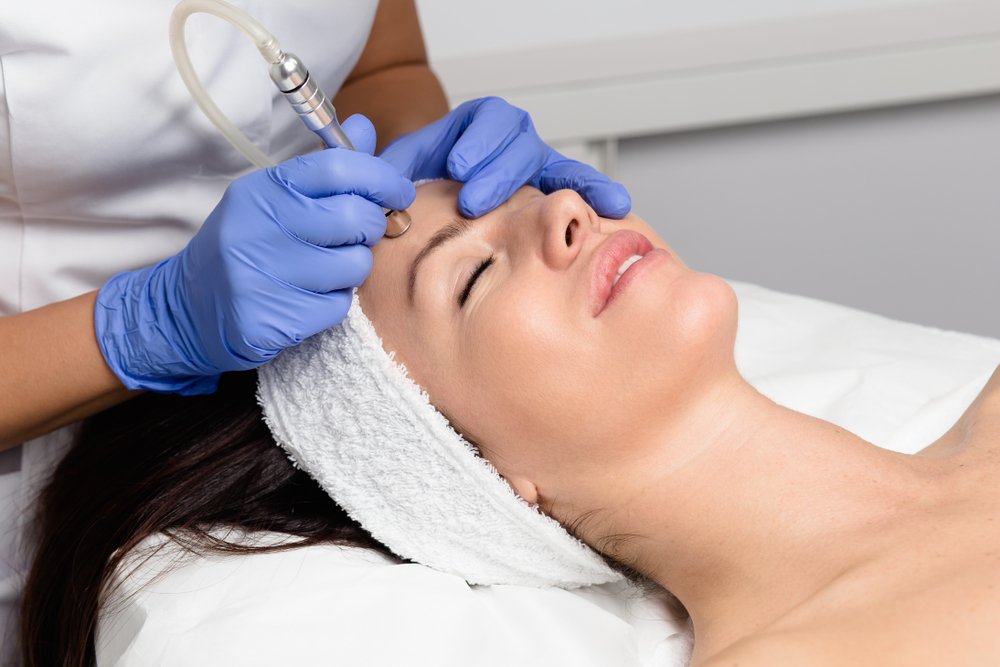 When it comes to maintaining a healthy and youthful complexion, exfoliating regularly is essential. However, with so many different exfoliation methods available, it can be overwhelming to figure out which one is right for you.
When it comes to maintaining a healthy and youthful complexion, exfoliating regularly is essential. However, with so many different exfoliation methods available, it can be overwhelming to figure out which one is right for you.
At PURE Medispa, we offer two popular skin exfoliation treatments: dermaplaning and microdermabrasion. Both of these treatments effectively remove dead skin cells and reveal a brighter, smoother complexion. However, there are some key differences between the two that may make one better suited for your specific skincare concerns.
Let’s take a closer look at dermaplaning and microdermabrasion to help you determine which one is right for you.
What is Dermaplaning?
Dermaplaning is a non-invasive skin treatment that uses a surgical scalpel to gently scrape off dead cells and fine vellus hair (also known as peach fuzz) from the skin's surface. This method of exfoliation is non-invasive and painless, making it suitable for all skin types.
The benefits of dermaplaning include:
- Smoother and brighter complexion.
- Reduced appearance of fine lines, wrinkles, uneven skin tone, and acne scars.
- Better penetration of topical skin care products.
- Makeup applications become easier and smoother.
- Promotes collagen production.
What is Microdermabrasion?
Microdermabrasion is a non-invasive exfoliation treatment that uses a handheld device to spray microcrystals onto the facial skin. These crystals work to gently remove dead skin cells and impurities from the surface of the skin.
The benefits of microdermabrasion include:
- Improved skin texture and tone
- Reduced appearance of pores, fine lines, and wrinkles
- Increased collagen production and skin elasticity
- Unclogged pores and reduced blackheads
- Smoothed out acne scarring and hyperpigmentation
Dermaplaning vs Microdermabrasion
While both are effective at exfoliating the skin, there are some key differences between the two treatments:
Exfoliation Method
Dermaplaning involves manually scraping off dead skin cells and fine hairs using a scalpel, while microdermabrasion physically exfoliates the skin using abrasive microcrystals. The difference in method can affect the treatment experience and may be better suited for different skin types.
Targeted Concerns
Dermaplaning is best for those looking to improve their overall complexion, while microdermabrasion targets specific skin concerns such as fine lines, wrinkles, and acne scars. Microdermabrasion is a better option for those with oily or acne-prone skin, as the crystals can help to unclog pores and reduce blackheads.
Sensitivity Level
Dermaplaning is a gentler exfoliation method than microdermabrasion, making it a more suitable option for those with sensitive skin. Microdermabrasion treatment may cause some mild discomfort or redness, but it is generally well-tolerated by most skin types.
Results
While both treatments can provide noticeable improvements to the skin, microdermabrasion typically requires multiple sessions to achieve the desired results. Dermaplaning, on the other hand, can provide immediate results after just one session. However, regular dermaplaning treatments are recommended for long-lasting results.
Which Is Better: Dermaplaning Or Microdermabrasion?
Ultimately, the best exfoliation treatment for you will depend on your specific skincare needs and concerns. If you are looking for a gentle and quick way to improve your overall complexion, dermaplaning may be the better option. However, if you have specific concerns, such as fine lines or acne scars, microdermabrasion may provide more targeted results.
It's always best to consult a skincare professional to determine which treatment is best for your skin type and concerns. At PURE Medispa, our experienced estheticians can help create a personalized treatment plan tailored to your individual needs.
Ready for Smoother, Brighter Skin?
Both dermaplaning and microdermabrasion are effective exfoliation treatments that can help you achieve a smoother, brighter complexion. However, understanding the key differences between the two can help you determine which one is best for your specific skincare needs.
Dr. Scott Mckenna, MD and his highly experienced team of medical estheticians at PURE can help you decide which treatment is right for you and provide a personalized skincare plan to help you achieve your desired results. Schedule an appointment today to experience the benefits of dermaplaning or microdermabrasion for yourself!
Remember, regular exfoliation is important for maintaining healthy and youthful skin, so don’t be afraid to try both treatments and see which works best for you. Schedule your free consultation online or call us at (570)-941-8460 for more information. Let us help you achieve your dream complexion.
Frequently Asked Questions
How often should I get microdermabrasion?
It is recommended to receive microdermabrasion treatments once every 4-6 weeks for optimal results. However, this may vary depending on your individual skincare needs and concerns. Consult a skincare professional like Dr. Scott Mckenna, MD for a personalized treatment plan.
Can I receive both treatments in one session?
It is not recommended to schedule dermaplaning and microdermabrasion during the same session, as they both provide deep exfoliation to the skin. Doing both treatments at once can cause irritation or sensitivity. It is best to space out these treatments over multiple sessions for optimal results.
Can I do dermaplaning at home?
While there are DIY dermaplaning tools available, it is not recommended to attempt this treatment at home. Dermaplaning should always be performed by a trained and experienced esthetician to ensure safety and proper technique. Book an appointment at PURE Medispa to receive professional dermaplaning treatment.
Are there any side effects from these treatments?
Both dermaplaning and microdermabrasion are non-invasive and generally well-tolerated by most individuals. However, some mild redness or sensitivity may occur after the treatment. It is important to follow post-treatment care instructions provided by your esthetician to minimize any potential side effects. Overall, these treatments are considered safe and effective for most skin types.
